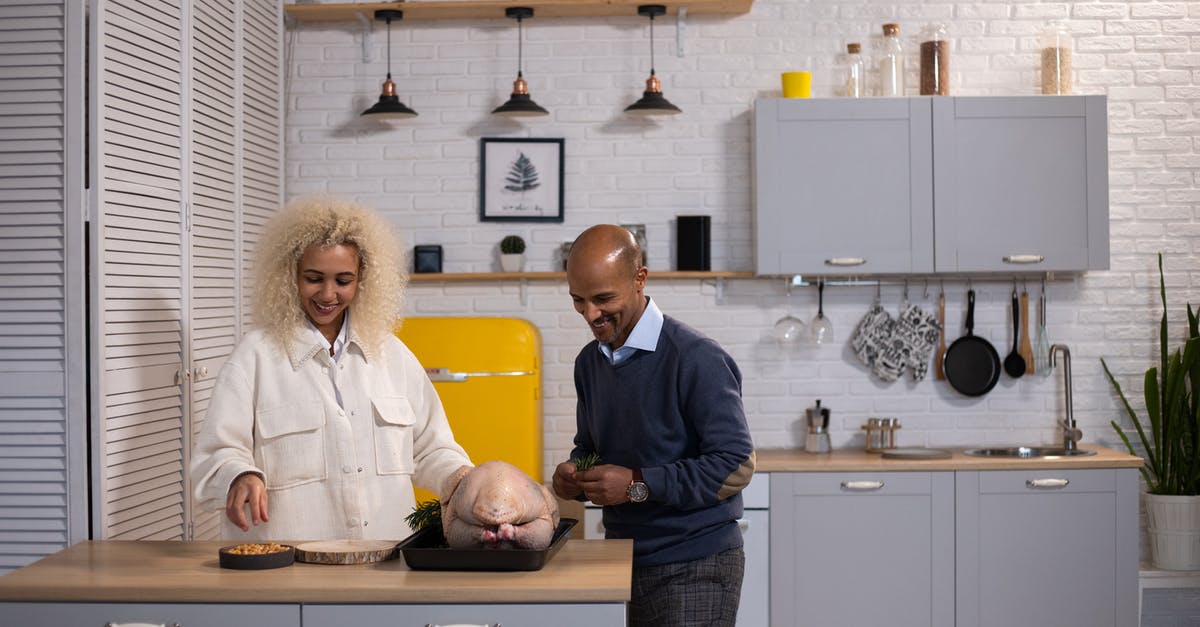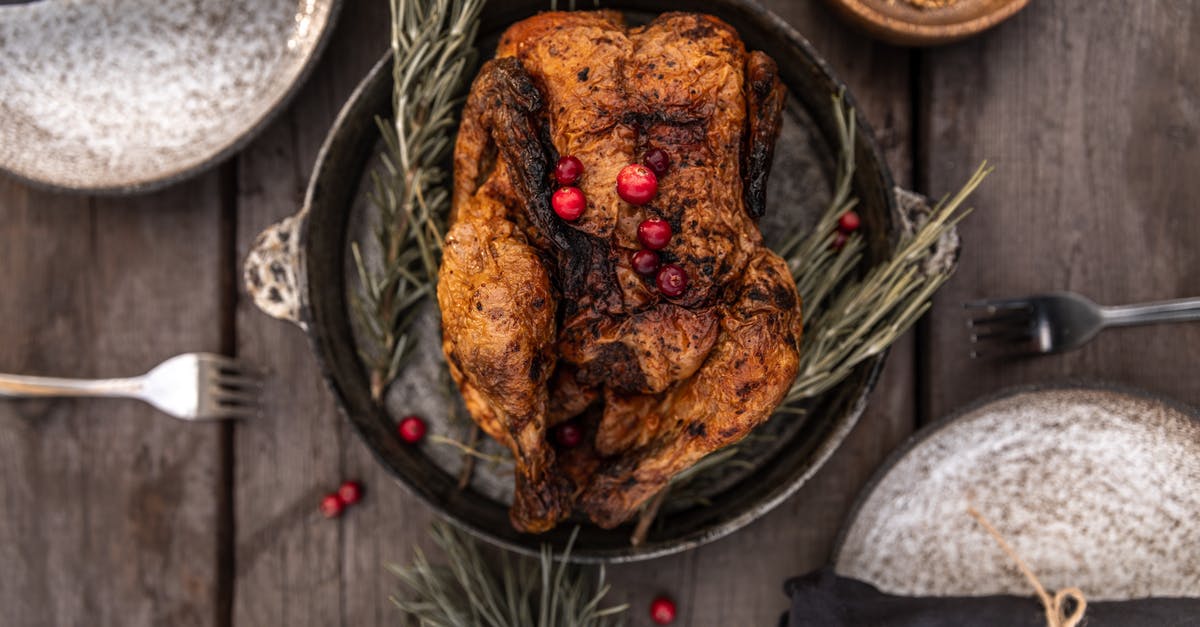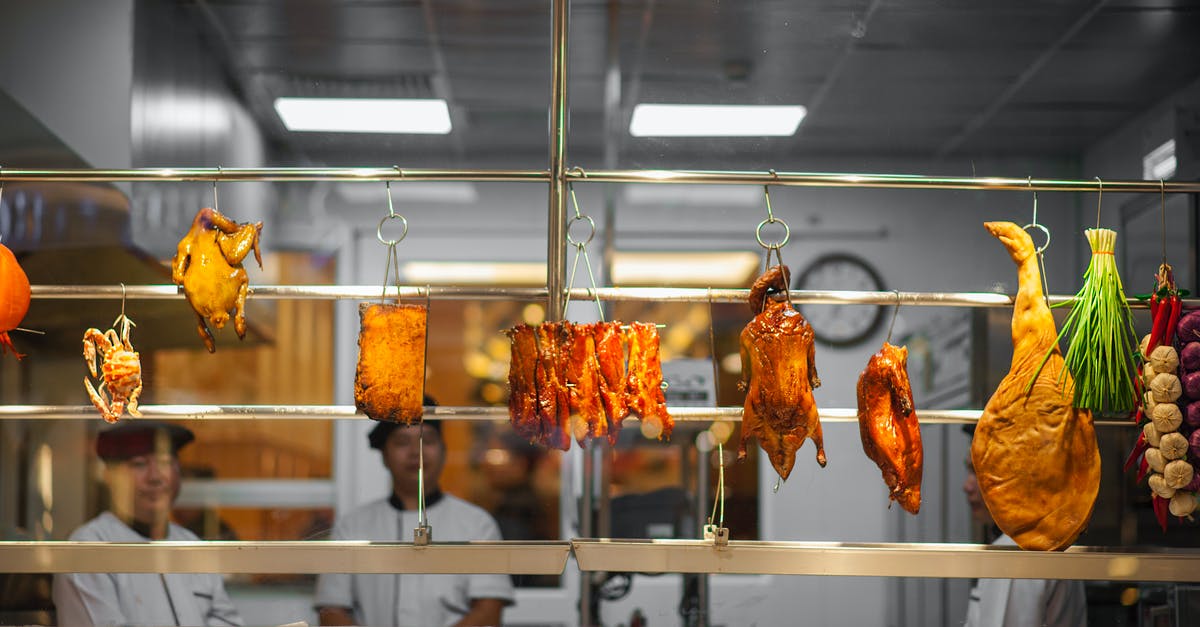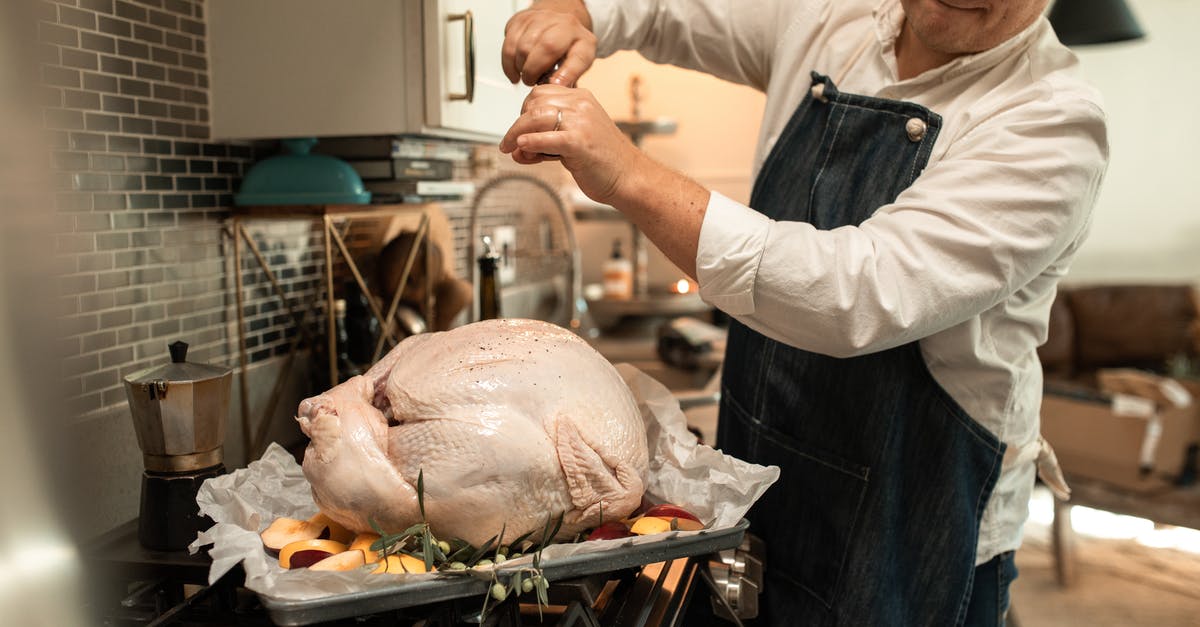Thoroughly cooking stuffing in a Turkey

I like to cook stuffing in the bird because I think it imparts flavors you just can't achieve cooking it out of the bird. The problem is, it's virtually impossible to get the stuffing to 165F/74C without way overcooking the meat. I read one suggestion to cook the bird until the meat is done and then remove the stuffing and finish it in the oven. That makes sense, but is it really a safe method? Is it possible the lining of the cavities also aren't fully done yet since they've been exposed to cooler stuffing and not hot oven air?
If so, would a good alternative be to remove the stuffing when the meat is, say, 10 degrees short of being done and then putting both the stuffing and bird back in the oven to finish?
Best Answer
I am firmly in the "stuffing is evil" camp... but lets take that as read :-)
If you absolutely must have in the bird stuffing, here is a link to a (I hope legal) excerpt of Alton Brown's Good Eats, showing his technique for doing turkey with stuffing:
http://www.aol.com/video/alton-browns-turkey-with-stuffing/444711017/
He uses a food-safe cotton bag, and pre-cooks the stuffing in the microwave. Then, he uses what looks like a flexible plastic cutting board to guide the bag of stuffing into the turkey.
The summary of his technique is that the stuffing is partially pre-cooked, so that it is hot when it goes into the bird, and comes up to temperature together.
. . .
In the abstract, independent of the pre-cook the stuffing method aluded to above:
The temperature of the inner surface of the cavity is going to be essentially equal to the temp. of the outer surface of the stuffing. Since neither is in contact with any of the heating modalities in the oven (radiation from the hot oven walls, conduction from air contact, convection from circulating hot air), that interface will only heat by conduction through the outer turkey. You want cooked stuffing without overcooking the turkey--that is tricky. But the short answer is yes, the stuffing prevents the turkey from getting convection/conduction heat on the inside.
To assess the temperature at the inside of the turkey, take the temperature of the stuffing, at the edge of the cavity. It will be safe at approximately 155 F (there is some variance depending on your assessment of risk, and which source you look at). This only indicates the turkey is safe, not the center of the stuffing, which you should also check.
Pictures about "Thoroughly cooking stuffing in a Turkey"



Quick Answer about "Thoroughly cooking stuffing in a Turkey"
Use cooked ingredients in your stuffing. Stuff your turkey just before cooking, not the night before. Stuff both the neck and body cavities of a completely thawed turkey. Cook your turkey until the stuffing reaches 165° F in the center.Should stuffing be cooked inside the turkey?
The safest way to cook stuffing (or dressing) is outside of the turkey. But you can cook it inside the turkey if you take the food safety steps.How do I know when my stuffing is done?
Any extra stuffing gets cooked alongside the bird in a casserole dish. Cook the stuffing in the bird to 160\xb0 to 165\xb0F. Check it with an instant-read thermometer inserted all the way into the center of the stuffing.Does cooking stuffing in the turkey dry it out?
Cooking Stuffing in a Turkey Then, put the remaining turkey and stuffing back in the oven until the stuffing reaches 165 degrees. White meat dries out faster than dark meat, so taking it off ensures that you can cook your stuffing safely without drying out the meat.Why should you not cook stuffing in the turkey?
The safety concerns have to do with salmonella and other bacteria, which can come from eggs in the stuffing or from the interior surface of the turkey's cavity. If the bird is removed from the oven before the stuffing reaches 165\xb0F, some bacteria could remain alive and make diners sick.How to Stuff a Turkey - Martha Stewart
More answers regarding thoroughly cooking stuffing in a Turkey
Answer 2
The problem with your premise is that 165f must be reached for the stuffing to be pasteurized. However, pasteurization begins at the top end of the "danger zone." The USDA spec sets that bar at 140f (in reality, you are out of the danger zone at 127f, but we'll use the USDA spec for the purposes of this discussion).
There is a time component to pasteurization, in addition to a temperature one. 165f is considered "instant kill," i.e. nearly all bacteria are killed in under 10 seconds. That is not the only way to achieve that kill level, though. 1 1/2 minutes at 155f will result in the same pasteurization level. As will 5 minutes at 150f. Or 35 minutes at 140f. As long as you can get the temperature of your stuffing out of the danger zone in a reasonable time, and it spends the requisite amount of time for pasteurization at whatever temperature it reaches, then the stuffing is safe to consume.
Answer 3
To get an Outside the turkey flavorful stuffing: I cook the stuffing covered in a separate dish in a water bath. To get the turkey flavor, I add chicken broth and will cook with chicken parts on top (and some melted butter). I also add turkey drippings. It usually requires about 1 hour, but check your temp. You still get the flavor, the turkey cooks much more quickly as the heat comes from the inside and out. I pre-cook the vegetables (like celery) and sometimes caramelize the onions (this adds a wonderful flavor, I do two separate batches [caramelized onion and regular onion for those who prefer traditional stuffing].
Or place the stuffing under the skin over the breast. Separate the skin from the breast using your hand. Be careful not to rip the skin. This method protects the breast from drying out, but can compact your stuffing.
Sources: Stack Exchange - This article follows the attribution requirements of Stack Exchange and is licensed under CC BY-SA 3.0.
Images: Monstera, EKATERINA BOLOVTSOVA, Min An, RODNAE Productions
